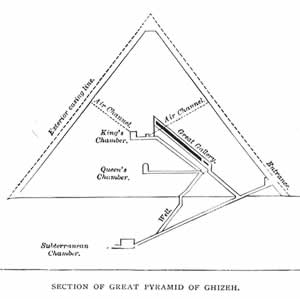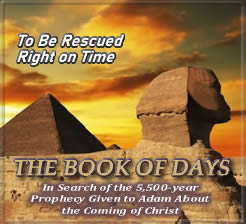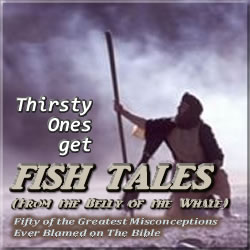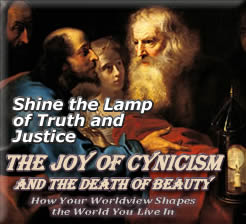A Capstone to Time (Cont’d)
The Pillar of Enoch
How does The Bible consider mere stone as a form of witness to the word of God? In fact, a passage in The Book of Isaiah has something very interesting to say about it. As in the construction of any grand edifice, which requires a precise plan of measurement, the following verses provide a unique benchmark into the meaning of the divine metaphor of the stone. Said Isaiah:
Listen to what the Lord says to all you skeptics who rule the people in Jerusalem, because you’ve said, “We’ve made a covenant with death and Hell. The overwhelming scourge will not reach us when it passes by, because we’ve made falsehood our refuge, so as to conceal ourselves with lies.”
Therefore, the Lord God says, “Look and see how I’ve placed a stone in Zion—a tested stone, a precious cornerstone as a firm foundation. Whoever believes in it will not be shaken. I’ll make justice the measuring line, and righteousness the level. Then, hail will sweep away the refuge of lies, and the waters will overflow the secret place.”1
What can one deduce about the meaning of the “stone” in the context of the preceding statement? Apparently, Isaiah is revealing that God and His creation are at odds. On one hand, there is the deceitfulness and myopia of the human race, while on the other hand, there is the perfection of God’s justice and righteousness—a perfection conveyed by what Isaiah described as a tested stone that functions as a cornerstone.
Story Continues Below
Says Richard Price—the founder and CEO of Academia.edu—on his podcast In Depth With Academia:
Tales of Forever: The Unfolding Drama of God’s Hidden Hand in History is:
To hear Price’s book review of Tales of Forever, CLICK HERE.
To hear Kent, Zen Garcia and S. Douglas Woodward, as they discuss the 5,500-year chronology from Adam to Christ, from the perspective of The Septuagint Bible, to confirm the contents of Tales of Forever, CLICK BELOW.
Story Continues From Above
Furthermore, he continues his metaphor by saying that God’s justice is like a measuring line and His righteousness is as a level, all of which—a cornerstone, a measuring line, and a level—are devices used in the construction of a building. Is this building merely a metaphorical building? Or, instead, is Isaiah thinking of an actual structure? The answer, I believe, is one that any beginner student in the study of The Great Pyramid is already well aware of. Immediately, one thinks of an earlier chapter in Isaiah, which has the prophet saying:
In that day, there will be an altar to the Lord in the midst of Egypt, and a pillar of God at its border. It will become a sign and a witness to the Lord of Hosts in the land of Egypt, for they’ll cry to God because of the oppressors, and He’ll send them a Savior and a Champion to deliver them.2
One of the foundational passages in the canonical record, this verse is cited by all advocates of Pyramidology in an attempt to verify the scriptural integrity of their subject matter. Because Egypt just happens to be divided into upper and lower sections, this description, they say, is perfectly fulfilled by the fact that The Great Pyramid sits on the very spot that constitutes both its center and its border.
The next clue to this verse, say the experts, pertains to the Hebrew meaning of the words for sign and witness. In order to dismiss the possibility that The Great Pyramid is nothing more than a by-gone funerary heap built for some heathen Pharaoh, pyramidologists quickly point out that the words used by Isaiah leave no margin for error in this regard. According to Strong’s Exhaustive Concordance of The Bible, the word translated as “sign” conveys the meaning of a signal, a beacon, a monument, and/or evidence.3 The word translated as “witness” is derived from a word that means to testify, to admonish, to charge, and/or give warning.4 Together, these words uniquely express the idea that in the land of Egypt, God will provide a monument that will stand as evidence, as a beacon, as a testimonial, bearing witness in a form that encompasses both an admonition and a warning.
To that end, advocates of Pyramidology will proceed with endless explanations as to the latent meaning revealed in the dimensions of the many passageways and chambers in this ancient megalith, each intended to mathematically predict nearly every important event in world history, both sacred and secular. Building off the work of such nineteenth-century pioneers as John Taylor, C. Piazzi Smyth, Robert Menzies,and Joseph A. Seiss, modern scholars like John Garnier, David Davidson, and Adam Rutherford have inspired the next wave of researchers, all with a single conviction held in common across the generations. That is to say, every one of them is convinced that this remarkable structure was divinely inspired to convey a message of God’s control over human history. But this message, they insist, is not one that is expressed in the form of words, which can become misconstrued over time or through mistranslation. In fact, it is conveyed via the incontrovertible science of mathematics. According to this way of thinking, because the God of The Bible is a God of Set Times, the mathematics of The Great Pyramid are expressed by way of the specific measurements of the passageways and chambers within it. These measurements, in turn, create a time-oriented chronology of the pivotal points in the biblical timeline, such as the Exodus of Israel out of Egypt, the birth, death, and resurrection of Christ, and the Reformation. Similarly, conveyed by the internal dimensions of The Pyramid, there are turning points in world history to be found, such as the invention of the printing press, the year of global revolution, and the commencement and cessation of World War I.
Having pointed that out, however, I did already explain this would not constitute the primary focus of this chapter, because attempting to confirm or deny the truth of all the intricate mathematics involved in the dimensions of this remarkable edifice would lead us down a far different path than I hope to take. Rather, what I am attempting here is to focus on any links that might connect Enoch’s role—as the first prophet of history—with whatever prophetic message is encrypted into The Great Pyramid of Giza. I merely mention the prior evidence provided by pyramidologists to demonstrate that just as Enoch has been connected with the gift of prophecy, so also has this most famous of all megaliths been connected with the notion of prophetic wisdom.
So much for this introduction to the way in which The Great Pyramid relates to the history of mankind. How, then, does its architecture reveal the hidden hand of Enoch as its original designer? Granted, one is facing numerous disadvantages in seeking the answer to such a question. If Enoch had drawn the schematics of this Pyramid, he might have signed his name at the bottom; but without such obvious evidence, one is left with only the structure itself as a clue to provide a potential answer. Moreover, as most researchers will confess, a megalithic work of this nature does not easily lend itself to the process of authentication. Except for the counterfeit hieroglyphs placed there by an overzealous explorer—erroneously identifying the pharaoh Khufu , a.k.a. Cheops, as the architect—The Great Pyramid, alone among all others, has never been found to contain a single stroke of writing. As a result, the only way to determine who might have designed it comes in the form of detective work. That is to say, one must look for other clues to reveal their true identity. In this case, because we are dealing with a stone edifice with passageways and chambers, we have a unique opportunity at our disposal in that a specific pattern emerges when one takes the time to examine its structural design. As such, a building’s construction can actually convey a recognizable signature, much in the same way that certain architectural features reveal whether a Michelangelo or a Christopher Wren might have designed a particular building.
More about this approach in determining Enoch’s role as The Pyramid’s architect will follow a little later. First, though, let us continue to build up a picture of the structural design that The Great Pyramid presents to us. By all accounts, the primary feature built into The Pyramid has to do with revealing a timeline of historical events of biblical proportion, but is this the only architectural feature that might provide us with the truth of who designed it? As a matter of fact, no, it is not.
In addition to revealing biblical chronology in stone, the dimensions of The Great Pyramid also display a unique insight into the nature of the physical construct of our Earth, which, according to the experts, includes, among other things, its weight, its mean density, and its distance from the Sun. So while researchers might disagree as to the “where and when” of historical events alluded to via The Pyramid’s dimensions, there is one thing that they have a much harder time disagreeing about—the verifiable dimensions of our solar system. This is not to say that science does not have different ways of measuring such things as the distance from the Earth to the Sun, the weight of the Earth, or its mean density. Nevertheless, while so much of biblical prophecy resides within the realm of personal opinion, the discrepancies encountered within the realm of physical matter are infinitely more reconcilable. In fact, these dimensional clues as to the physical nature of the Earth and Sun seem to stand out as a clear punctuation mark in the overall investigation of the more metaphysical aspects of Pyramidology. In other words, it seems as if whoever designed The Great Pyramid fully anticipated the skepticism of humanity that would one day ponder the mystery of its construction, and in order to substantiate its prophetic possibilities, they included these more tangible clues concerning the physical nature of the solar system.








